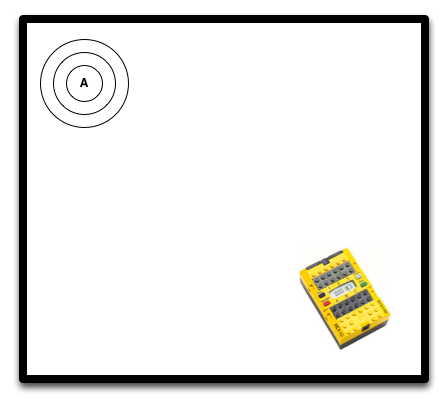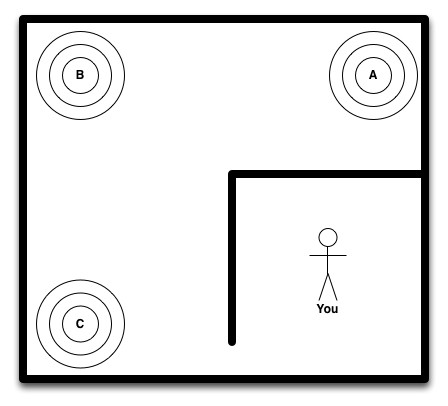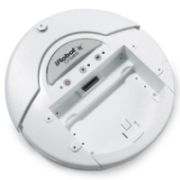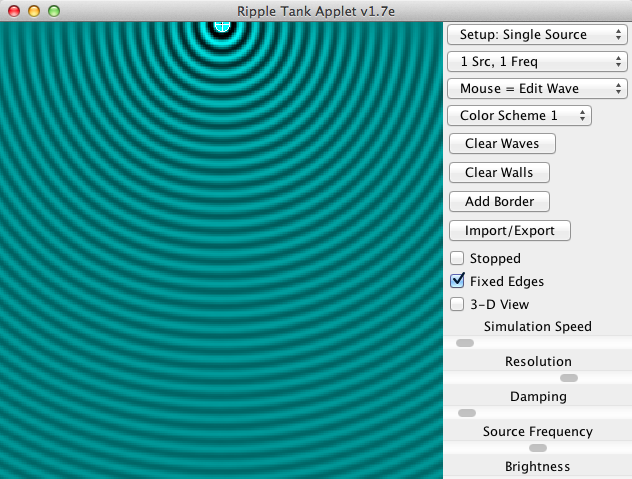CSC 126 Introduction to Robotics
Listening, Waves, Microphones, and UltrasoundObjectives
- Learn about waves, microphones and ultrasound
- This assignment must be done individually.
Create a new Microsoft Word or text document named YourUserName-A14.
In this assignment, you will think about the nature of sound, specifically as it applies to both the microphone sensor and the ultrasonic rangefinder on the NXT. These devices both work with sound, which... while critical to most of us on a daily basis is not not something we necessary think about very often.
To The Wave Tank!
First, lets take a look at a wave tank. You see, sound is a wave, meaning that it is vibrational energy that is emitted from a source, and it propagates through a medium. Another way to think of that is to say that a wave... er, "waves" through something, whether that is water, air, or solid matter.
At the extreme end of the spectrum are the oceanographic researchers interested in things like "tsunamis," which are "super waves" that occur in the ocean.
The Virtual Wave Tank
Fortunately, even though we don't have a wave tank for you to play with, we do have a virtual wave tank. Your first set of questions and exercises come from playing with an online, virtual wave tank. You will need to have Java installed (it should be, by default, part of your Berea laptop's build), and visit http://www.falstad.com/ripple/. You want to run the applet that pops up there---it is a virtual wave tank that you can play with.
First, just play with the demo. It's kinda cool. I found it interesting to experiment with the settings on the right hand side. You can change the number of sources, which are places where waves are made. (If this was sound, those would be like speakers on a stereo system.) You can change whether holding down your mouse button creates more waves (kinda cool) or adds walls (also kinda cool). You can change the frequency (how quickly new waves are created), how fast the simulation runs (I slowed mine down), the "damping," which effects how fast the waves die (like shouting through a snowstorm), and many other things.
- Spend 10 minutes (or more) just playing with the app. Explore how the waves behave. Use the import/export button to capture the settings you are using, and paste those into a document. Write a paragraph or so explaining why you think these settings are interesting.
- Create a room that has a single sound source in the upper
left-hand corner. (You can grab sound sources and move them around.)
Imagine that your NXT is in the bottom right-hand corner, as
depicted in my image below. If your NXT only has one "ear," or
microphone, do you think it can tell which direction the sound is
coming from? Write a paragraph or two stating your view on this, and
explain why you think your point of view is correct.

- Create a room with four sound sources, one in each corner.
Imagine your NXT is in the middle. If it had only one ear, could it
tell that there were four sound sources? (I recommend playing with
the "3D View" in the applet if you haven't tried it yet.) If it had
two microphones, could it tell? Four (one at A, B,
C, D)? Could you have enough ears
to tell where the sound came from in this situation? Write a
paragraph or two stating your view on this, and explain why you
think your point of view is correct.

- Imagine you are in a room. Experiment with a single sound source,
and put it in each of position A, B,
C, D in turn. Clear the waves
after you move it, so you get a clean slate. What would things
"sound like" in the room? Write a paragraph or two capturing what
you think you would hear.

- The final question for this section: With a single microphone, what about sound can our NXT detect? What will our NXT never understand, if it only has one ear? As with the rest of the questions in this section, explain in a paragraph or two so that we understand what the reasoning is behind your answer.
Ultrasound!
It sounds like science fiction. But, really, it is just what dolphin's do.
Please watch the following short video about ultrasonic rangefinders. It may help you understand a bit about what the ultrasonic rangefinder can do. (Ultimately, it boils down to "it can measure distance" and "it works best when detecting hard, not soft, things.")
Now, that is potentially interesting to robotics researchers, but probably not to kids.
The Yellow Drum Machine is built on an Arduino, which is less powerful computationally than the NXT. It uses an ultrasonic rangefinder to detect surfaces it can groove on, and it uses a microphone to record itself laying down the choons. Then, it funks out to its own rhythms, creating a robotic multitrack of beaty goodness.
While we don't think we can easily recreate the Yellow Drum Machine, we do want you to do one last thing.
- Given a microphone and ultrasonic rangefinder, come up with at least 5 ways you could modify previous a previous lab or labs to make them more interesting and interactive through the use of a microphone and/or ultrasonic rangefinder. While I want you to be creative, I also want you to think practically: how could this small addition of a new sensor make a lab much more interesting to kids?

